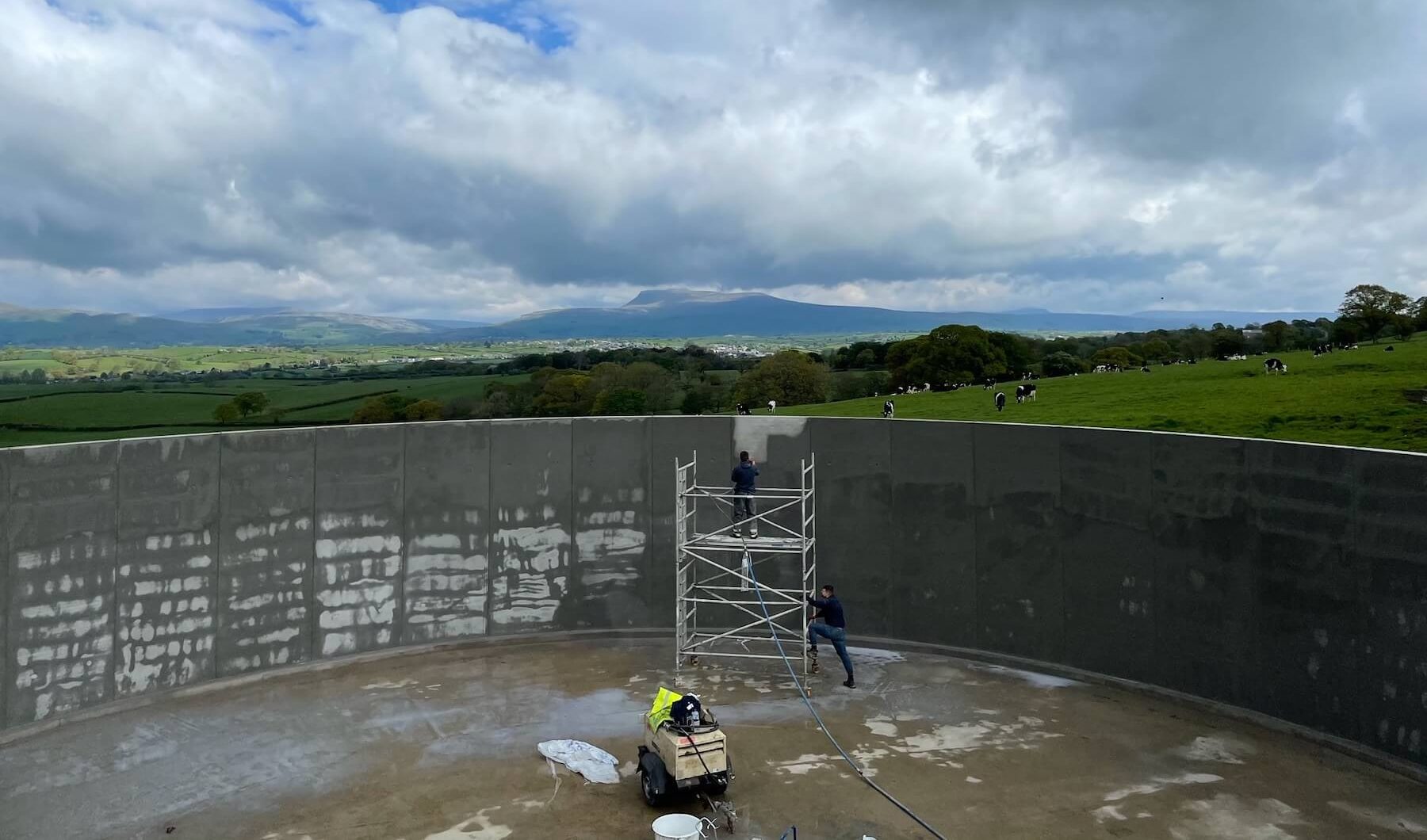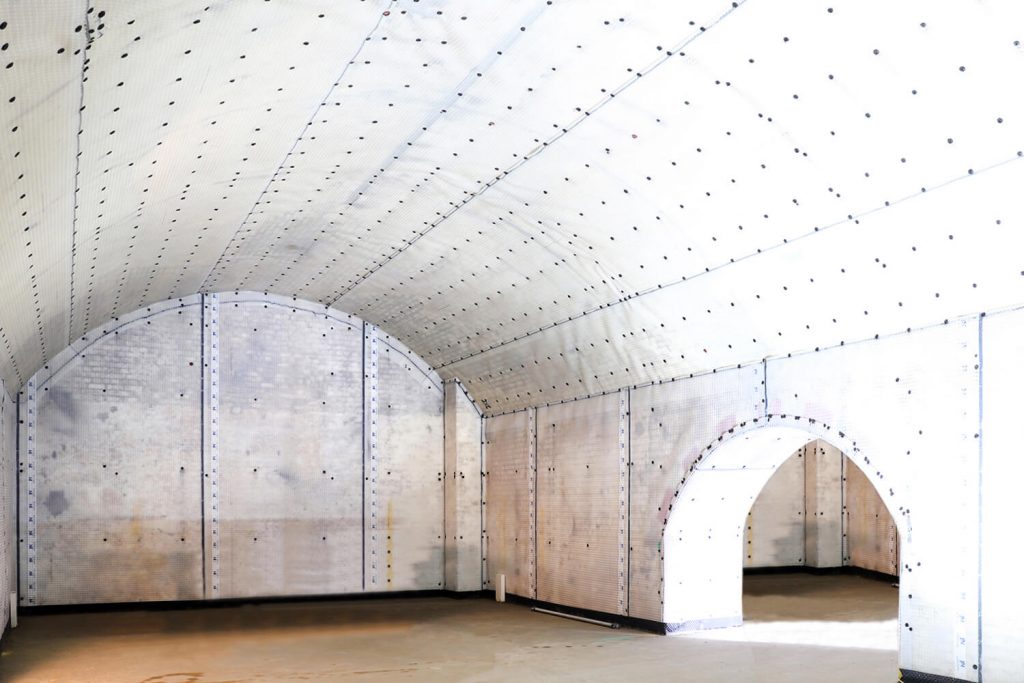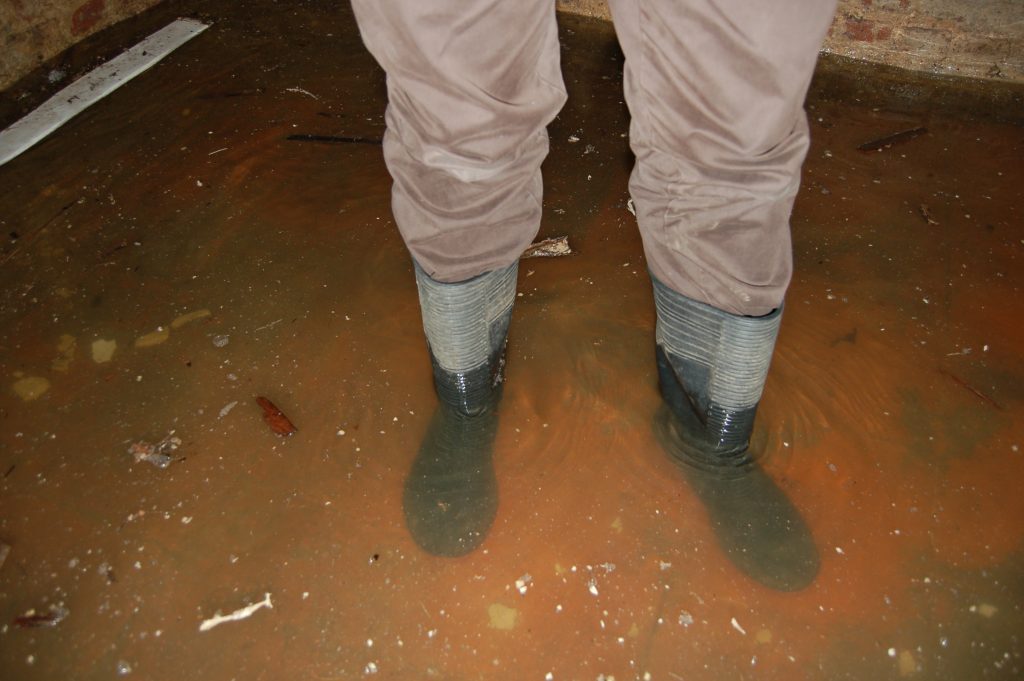01732 496 523
For architects and specifiers, ensuring the longevity and usability of below-ground spaces requires robust waterproofing solutions. A Cellar tanking system is one of the most effective methods of protecting basements and cellars from water ingress, damp issues, and potential risks caused by hydrostatic pressure.
This guide explores everything you need to know about cellar tanking, from professional installation methods and our specialist systems to practical considerations for contractors. Whether you are planning a basement conversion or specifying a waterproofing system for a new build, understanding cellar tanking is crucial for creating a dry, habitable space.
What is Cellar Tanking System?
Cellar tanking is a waterproofing method that involves applying a physical barrier to the internal or external surfaces of a basement or cellar to prevent water ingress. This method is categorised as Type A ‘barrier’ waterproofing within British Standard 8102:2022, and is one of three potential methods of waterproofing below-ground structures.
There are two main types of cellar tanking:

- External ‘Type A’ Waterproofing – Barrier waterproofing membranes that can be applied to the external side of the structure include both pre-applied, self-healing sheet membranes, and post-applied liquid membranes that can be linked to the above-ground DPC to completely encapsulate, or “tank”, the basement in a continuous layer.
- Internal ‘Type A’ Waterproofing – Waterproofing barrier membranes that can be applied to the internal side of the structure include a variety of liquid-applied products, installed either by spray machine, trowel, brush, or by roller directly. Unlike external tanking products, these membranes must actively hold back any ingressing water.
Both approaches have their applications, so it is always important when selecting a cellar tanking system to choose the correct product for your project, and to ensure that the substrate is prepared correctly.
The Importance of Cellar Tanking
For buildings with below-ground areas, waterproofing is essential to prevent water ingress, damp problems, and structural damage. Without adequate protection, water penetration can lead to condensation, mould growth, the deterioration of internal finishes, and even flooding.
Effective cellar tanking, when combined with other appropriate forms of waterproofing, provides a safe and dry below-ground environment for storage, additional living space, or commercial use, with long-term protection against water ingress.
Architects and specifiers must consider cellar tanking as a key element in any basement waterproofing system to ensure structural integrity and long-term usability.
Professional Installation Methods

The effectiveness of a cellar tanking system depends on proper installation. Professional methods involve careful planning, surface preparation, material selection, and precise application techniques.
Surface Preparation
Before applying any waterproofing system, the substrate must be correctly prepared:
- Cleaning & Preparation – Remove any previous coatings, dirt, or debris from the cellar walls and floor to ensure strong adhesion. With internally applied tanking, concrete laitance will also need to be removed so that tanking material is fully bonded to clean, sound concrete.
- Repairs – Any cracks, holes, or weak areas in the brickwork must be repaired with a suitable waterproof mortar.
- Damp Substrates – Some tanking systems, such as cementitious membranes, require a wetted (almost saturated) surface for optimal bonding.
Choosing the Right Waterproofing System
Selecting the right waterproofing system depends on the specific characteristics of the project. Different tanking products, such as cementitious membranes vs bitumastic coatings or sheet membranes, have different characteristics, so it’s important to select one that meets your project needs. Factors to consider might include, but are not limited to:
- The Substrate – Is it reinforced concrete or is it a more porous material?
- Application Location – Is it an internal or external Type A waterproofing scenario?
- Application Method – Generally by brush for internal tanking and by trowel or even sheet applied for external tanking
- Flexibility – Will the product be required to accommodate movement in the structure?
- Fire Resistance – Does the structure have a minimum fire resistance level that the product needs to meet, such as with balconies over 18m
- Combined Waterproofing – Will the cellar tanking be used alongside other Type A and Type C waterproofing systems?
Application of Tanking Products
Tanking involves applying a waterproof membrane, coating or slurry directly onto the internal or external surfaces of the structure. This process includes:
- Priming – A preparatory coat that enhances the adhesion of the tanking system.
- First Coat – The initial layer of waterproof slurry is applied using an accepted application method for that product, ensuring full coverage and consistent thickness.
- Second Coat – If necessary for multi-coat products, once the first coat has partially cured, a second coat is applied at a perpendicular angle to ensure complete coverage and protection.
- Curing – The system must be allowed to cure in line with the product manufacturers guidelines on curing times and temperature in order to reach full strength.
Why Would You Use a Cavity Drain System?
Cavity drain systems, defined as Type C ‘drained’ protection by BS 8102:2022, are an alternative waterproofing method that seeks to manage and safely remove water that is entering a below-ground space, rather than attempting to block it.
If maximum protection against water ingress is required for a basement or cellar, then a combination of Type A barrier waterproofing and Type C drained waterproofing should be considered as the safest approach.
Combined systems are much less risky than relying solely on a tanking membrane or coating as, if the tanking is defective for any reason, water will enter the structure and compromise the internal space. Unlike tanking systems, a cavity drain system does not resist the water ingress, so it is much less susceptible to these issues.
Compliance with Industry Standards
All cellar tanking installations must adhere to British Standard 8102:2022, which sets out best practices for below-ground waterproofing. Compliance with this standard ensures:
- The correct selection of waterproofing systems
- Proper integration with other systems
- Long-term performance and durability
Common Questions About Cellar Tanking
What is the Most Effective Way to Waterproof a Cellar?
The most effective way to waterproof a cellar depends on site conditions. In most cases, combining a cavity drain system with appropriate drainage and a sump pump offers the best long-term solution. Where the structure is not providing sufficient resistance to water ingress, Type A tanking is often used to ensure that the Type C system is not overwhelmed.
Can Cellar Tanking Fail?
Yes, cellar tanking can fail if not installed correctly. Common reasons for failure include:
- Poor surface preparation – Coatings do not adhere properly.
- Poor installation – Often by those that are not trained and do not understand the importance of correct installation
- Poor design or poor selection of product – As with all waterproofing systems, design should be those who are experienced and have good product knowledge to ensure suitability
Choosing high-quality materials and professional design and installation significantly reduces the risk of failure.
Ensuring Long-Term Protection for Below-Ground Spaces
Cellar tanking is a vital aspect of basement waterproofing, ensuring that below-ground spaces remain dry, usable, and structurally sound. By choosing the right waterproofing system – whether cementitious tanking or a cavity drain system – architects and specifiers can design effective solutions for residential and commercial properties.
Newton Waterproofing provides industry-leading systems designed for long-term performance. For expert guidance and tailored solutions, contact us today.
Speak to our friendly, expert team
Our staff are able to provide guidance for projects of all sizes, whether you require some general advice about damp or waterproofing, or support with technical drawings and specifications.

















